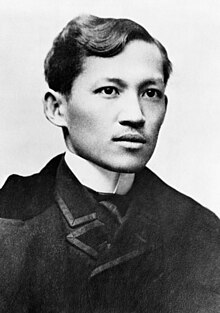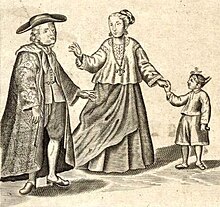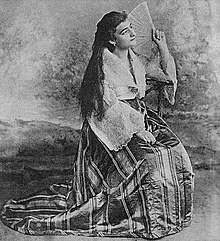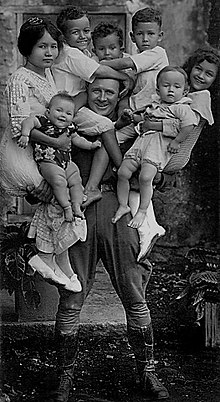
The history of the Philippines dates from the earliest hominin activity in the archipelago at least by 709,000 years ago. Homo luzonensis, a species of archaic humans, was present on the island of Luzon at least by 134,000 years ago.

Demography of the Philippines records the human population, including its population density, ethnicity, education level, health, economic status, religious affiliations, and other aspects. The Philippines annualized population growth rate between the years 2015–2020 was 1.53%. According to the 2020 census, the population of the Philippines is 109,033,245. The first census in the Philippines was held in the year 1591 which counted 607,612 people.

Luzon is the largest and most populous island in the Philippines. Located in the northern portion of the Philippine archipelago, it is the economic and political center of the nation, being home to the country's capital city, Manila, as well as Quezon City, the country's most populous city. With a population of 64 million as of 2021, it contains 52.5% of the country's total population and is the 4th most populous island in the world. It is the 15th largest island in the world by land area.

Mestizo is a person of mixed European and Indigenous non-European ancestry in the former Spanish Empire. In certain regions such as Latin America, it may also refer to people who are culturally European even though their ancestors are Indigenous. The term was used as an ethno-racial exonym for mixed-race castas that evolved during the Spanish Empire. It was a formal label for individuals in official documents, such as censuses, parish registers, Inquisition trials, and others. Priests and royal officials might have classified persons as mestizos, but individuals also used the term in self-identification.
The Spanish influence on Filipino culture originated from the Spanish East Indies, which was ruled from Mexico City and Madrid. A variety of aspects of the customs and traditions in the Philippines today can be traced back to Spanish and Novohispanic (Mexican) influence.
In the context of the Spanish Empire, a peninsular was a Spaniard born in Spain residing in the New World, Spanish East Indies, or Spanish Guinea. Nowadays, the word peninsulares makes reference to Peninsular Spain and in contrast to the "islanders" (isleños), from the Balearic Islands, the Canary Islands or the territories of Ceuta and Melilla.

Chinese Filipinos are Filipinos of Chinese descent with ancestry mainly from Fujian, but are typically born and raised in the Philippines. Chinese Filipinos are one of the largest overseas Chinese communities in Southeast Asia.

Torna atrás or tornatrás is a term used in 18th century Casta paintings to portray a mestizo or mixed-race person who showed phenotypic characteristics of only one of the "original races", such as European or Amerindian ancestry. The term was also used to describe an individual whose parentage was half white and half "albino".

Sangley and Mestizo de Sangley are archaic terms used in the Philippines during the Spanish colonial era to describe respectively a person of pure overseas Chinese ancestry and a person of mixed Chinese and native Filipino ancestry. The Sangley Chinese were ancestors to both modern Chinese Filipinos and modern Filipino mestizo descendants of the Mestizos de Sangley, also known as Chinese mestizos, which are mixed descendants of Sangley Chinese and native Filipinos. Chinese mestizos were mestizos in the Spanish Empire, classified together with other Filipino mestizos.

Filipinos are citizens or people identified with the country of the Philippines. The majority of Filipinos today are predominantly Catholic and come from various Austronesian peoples, all typically speaking Filipino, English, or other Philippine languages. Despite formerly being subject to Spanish colonialism, only around 2–4% of Filipinos are fluent in Spanish. Currently, there are more than 185 ethnolinguistic groups in the Philippines each with its own language, identity, culture, tradition, and history.
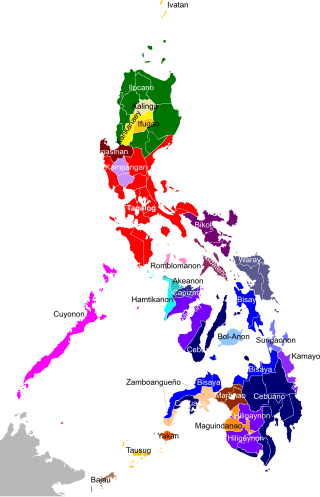
The Philippines is inhabited by more than 182 ethnolinguistic groups, many of which are classified as "Indigenous Peoples" under the country's Indigenous Peoples' Rights Act of 1997. Traditionally-Muslim peoples from the southernmost island group of Mindanao are usually categorized together as Moro peoples, whether they are classified as Indigenous peoples or not. About 142 are classified as non-Muslim Indigenous people groups, and about 19 ethnolinguistic groups are classified as neither Indigenous nor Moro. Various migrant groups have also had a significant presence throughout the country's history.
Mexican settlement in the Philippines comprises a multilingual Filipino ethnic group composed of Philippine citizens with Mexican ancestry. The immigration of Mexicans to the Philippines dates back to the Spanish period.

Filipino Mexicans are Mexican citizens who are descendants of Filipino ancestry. There are approximately 1,200 Filipino nationals residing in Mexico. In addition, genetic studies indicate that about a third of people sampled from Guerrero have Asian ancestry with genetic markers matching those of the populations of the Philippines.

Spanish Filipino or Hispanic Filipino are an ethnic and a multilingualistic group of Spanish descent native to the Philippines. They consist of Peninsulares, Insulares or white Criollos, Filipino mestizos, Spanish-speaking Filipinos, and hispanic people from South America who are descendants of the original European settlers during the Spanish colonial period. Many of their communities trace their ancestry to the early settlers from Spain and Latin America, and depending on the specific province in the Philippines, in the late 1700s to early 1800s they formed as much as 19% in the capital city of Manila at formerly named Tondo province, and about 1.38% of the Ilocos region, 2.17% of Cebu or 16.72% of Bataan and other parts of the country.
Immigration to the Philippines is the process by which people migrate to the Philippines to reside in the country. Many, but not all, become citizens of the Philippines.

The history of the Philippines from 1565 to 1898 is known as the Spanish colonial period, during which the Philippine Islands were ruled as the Captaincy General of the Philippines within the Spanish East Indies, initially under the Viceroyalty of New Spain, based in Mexico City, until the independence of the Mexican Empire from Spain in 1821. This resulted in direct Spanish control during a period of governmental instability there. The Philippines was under direct royal governance from 1821 to 1898.

Racism in the Philippines is multifarious and emerged in various portions of the history of people, institutions and territories coinciding to that of the present-day Philippines.
Latin American Asians are Asian people of full or partial Latin American descent.

Tipos del País, literally meaning Types of the Country, is a style of watercolor painting that shows the different types of inhabitants in the Philippines in their different native costumes that show their social status and occupation during colonial times.

Carta Hydrographica y Chorographica de las Islas Filipinas, more commonly known as the Velarde map, is a map of the Philippines made and first published in Manila in 1734 by the Jesuit cartographer Pedro Murillo Velarde, the engraver Nicolás de la Cruz Bagay, and the artist Francisco Suárez. The World Digital Library describes it as the "first and most important scientific map of the Philippines". It is frequently referred to as the "Mother of all Philippine Maps".
